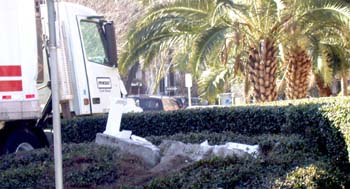Leslie Dawn Oliver does not know where her money went.
Tuition and related fees, or the financial cost of undergraduate students to attend Loyola, have been increasing steadily since 1983.
When President Reagan was in office, a full-time student paid $1,975 for tuition per semester. Today, a semester at Loyola costs $8,498.50 in tuition.
According to the U.S. News and World Report, the overall cost of attending Loyola University for the 2001-2002 academic year cost an incoming freshman $16,700, which includes tuition, fees and room and board. Where does this money go?
“I have no idea — I guess to pay teachers,” Leslie Dawn Oliver, English senior, said.
The cost of attending a private Jesuit university breaks down into a smaller system of cash distribution.
This year, a full-time returning undergraduate paid $8,498.50 in tuition per semester and $286 in fees for the fall semester.
The fees fall into three sub-categories. These include general fees, an Information Technology fee and a $20 student publications fee charged only in the fall term.
The general fees further extend the meandering trail of green paper.
As part of this fee, every non-freshman undergrad pays an $88 Student Center Fee, a $28 Student Government Association Fee and a $55 Athletic Fee.
Part-time students — those who are enrolled in less than 12 hours — pay a total $84.50 in general fees, a $37.50 Information Technology Fee and the same publications fee. In addition, they pay $572 per credit hour instead of a flat tuition rate.
“Seventy percent of the net expense budget — total expenses less financial aid — goes to salaries and benefits, FICA or Federal Insurance Contributions Act, retirement match, health insurance, etc,” Rhonda Cartwright, vice president of Business and Finance, said. “Another seven plus percent is spent on utilities and debt service, principle and interest payments on our debt. The remaining 20-plus percent is distributed to various divisions and departments, with half going directly to the division of Academic Affairs.”
The new crop of freshman shell out more than anyone at every turn.
Approximately 67 percent of incoming freshman live on campus and have to pay for room and board. In addition, they also have to pay for something called the New Full-Time Student Orientation Fee, which tags on an additional $150. Freshmen pay more for tuition, to the tune of $851.50.
“I think they’re just trying to get money out of the people that are going to drop out,” Stephen Breaux, music business sophomore, said.
The retention for the 2001-2002 academic year was 81.2 percent.
“Net tuition, total tuition less financial aid, represents 65 percent of the total revenue for the university,” Cartwright said. “Other components of revenue include the bookstore, meal plans, dorms, endowment draw and others.”
According to Cartwright, the budget is a month-long process that begins with meetings of the University Budget Steering Committee. The committee meets to determine some of the major points that need to be addressed by the full University Budget Committee.
The committee discusses proposed tuition and salary increases and the financial aid commitments, which correlate directly with tuition increases.
The full University Budget Committee also discusses proposed increases in fringe benefits, which correlate back to proposed salary increases. Once the committee finalizes all of the recommendations, Cartwright presents these to the finance committee of the Board of Trustees.
“Loyola does give a lot of aid,” Oliver said. “That’s the reason why I picked this school — they gave me enough aid to actually pay for it, compared to Xavier or UNO.”
Loyola is also on a list with other small private institutions called a Reference Group, which includes such universities as Oberlin College, Providence College and Rollins College.
The list is based on the annual lists of schools published in the U.S. News and World Report, which groups similar universities together for comparison.
These factors include academic cost and financial aid ratios. Between 2000 and 2001, Loyola’s overall attendance cost for incoming freshman increased by $1,219, the second greatest comparative increase of the four schools. Loyola’s average financial aid package increased $610, which put the school in third place.
“I don’t see any results from tuition increases,” Oliver said “It’s the same as when I got here my freshman year and I’m a senior.”






